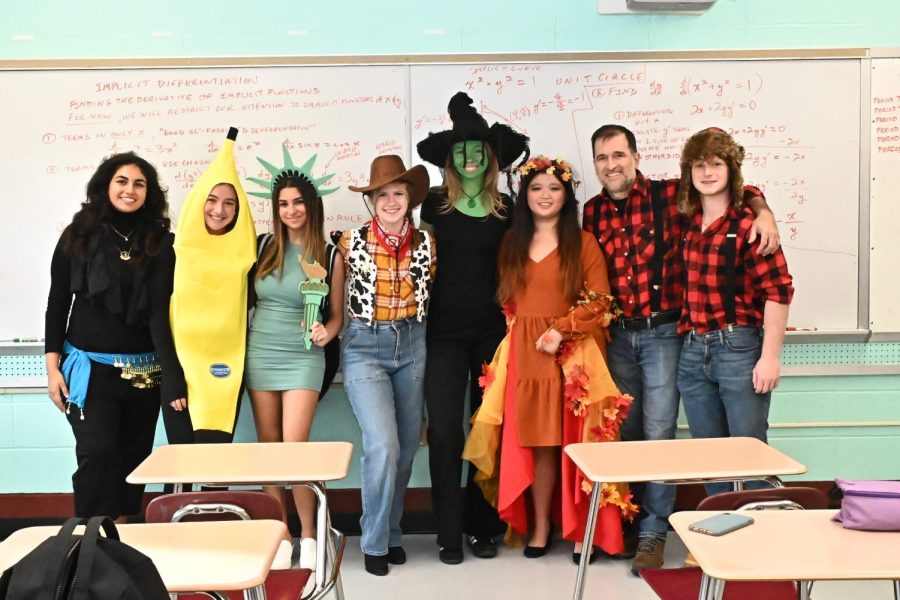Google Meet Moments: I Have No Idea What Is Going On
For students in this Covid learning experiment, the words “distance learning, “virtual,” and, of course, “pandemic” do not inspire. In a great arena of things to write, why pen those words? They bear to neither the soul nor mind any feeling of happiness.
I just do not want to scare you away with these words, because we have heard them so much that now they are just boring to read and hear – maybe even irritating. I just feel a need to discuss the context of distance learning, virtual high school, and the pandemic
Distance learning is really boring a lot of the time. And there are occasional curious, unexpected periods – usually just moments – when in this new and unexplored situation one can find themselves with absolutely no clue as to what is happening.
The “distance,” or the paradigm of conducting a class virtually while desperately pretending as if a Meet was a brick classroom, creates interesting parameters for social function. Interaction, and the character and substance of communication are totally twisted, redefined in this new forum.
Google Meets are weird is all – and they can mean total disorientation, just total confusion, about anything, arising from the strange idiosyncratic hiccups occasioned by video conferencing.
I will give you an example: Today in one class the teacher noticed somebody had joined the Meet late, in the middle of the period. There was a delay in the call, so the teacher saw the notification that the student had joined before the class saw it.
When she took notice she briefly paused what she was saying to the class, acknowledged the other student and said something to him, and then continued addressing the mass. It was quick, and casual, and went by in a few seconds.
But in that time between when the teacher started talking to the other student, whose existence I had no reason to have on my mind, and when, a few moments later, I could piece together the meaning of this simple interruption in the teacher’s monologue, I was very confused. I did not know the other kid had joined for another moment, so the interruption was unexplained, and what the teacher was saying was very disjointed and foreign to the context.
This kind of thing happens regularly in virtual settings; in person it would likely be a lot easier to tell that the person who was just addressing me had simply been distracted and was now talking to somebody else.
But you do not have those cues in a video call. It’s much harder to discern and infer intention, or connotation, or even direction, from the face in the sea of squares.
These confused moments often come and go very quickly, like this one did. It is natural, after all, to realize that the teacher was talking to the kid who just joined, or perhaps that the strange and enormous sound that has just begun is a vacuum cleaner from a mic left on.
But the cluelessness in that moment is lent unique completeness by the nature of distance learning and how it denies so much situational context.
Here is another example. It’s a somewhat sad and hilarious image, where a teacher is sitting in their Meet for five minutes waiting for their class to join, only to realize that they had joined the wrong one and their students were mindlessly refreshing and clicking the correct classroom’s join link ad infinitum.
But that moment of pure, intense and nearly comical confusion the teacher experiences – as in, “where the hell is everybody?” – is notable. They are trying to do their job, and they have no idea what is going on. Neither do the students. The teacher sees that the students were all present in their earlier classes, and he is sure that he has the time correct. Is it a prank? A strike?
In no scenario in a brick and mortar school could the context surrounding the teacher’s entire scope of concern be so completely dissolved. All he knows is the Meet at that moment, nothing of the students or their whereabouts, their faces or intentions. Clues – things like movements and migrations in hallways, loudspeaker announcements and other students – cannot inform his perspective as he solves this mystery, a technical misunderstanding.
In this case, distance learning is a model where the simple equation of putting teacher and student in the same space to communicate becomes complicated.
Overall, this virtual groove opens us up to peculiar little moments like this – moments that leave you wondering, even if for just a moment, “what is going on right now?” Often this is a consequence of technical volatility and user error; computers are hard and sometimes they do strange things. But also very often these moments happen as a result of having to learn and communicate with new and imperfect systems.
Considering these systems, how we play with them, and our situation at the moment, the ability to be totally confused at any moment during class is now unremarkable, a norm. Distracting things could always happen in the in-person days, but never could a vacuum cleaner running in one student’s living room totally and immediately overtake the attention of every other student. Imagine sitting in class and suddenly all you can hear is a vacuum cleaner. Similarly, rarely does a class of students leave a teacher clueless about their whereabouts, but with every intention of going to class.
Education is a function of attention. With that in mind, it is important to design systems for delivering education that prioritize the preservation of attention, and ensure mutual understandings between students and all components of the learning system.
I am not sure where the application of this information is. Maybe if the incidence of user confusion events is an indication of the efficiency of a system, lessons can be taken from the distance learning model’s ability to dissolve situational context and limit social maneuverability.
But I hope the next time a strange audio glitch confounds your auditory perception, primed only for monologue, or when verbal misunderstandings in the awkward pseudo-social Google Meet pool of faces creates disparate, perplexing chatter, that in that moment of confusion you will find some relief from the monotony, some hint of refreshing air in the novelty of an unexpected and yet unexplained event.









